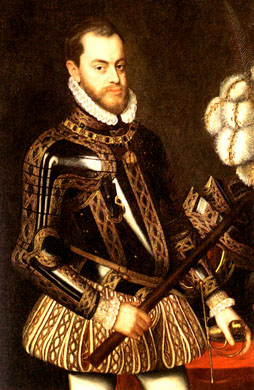Philip was a very devout Catholic, and was ruthless in the suppression of Lutheran heresy. He believed that it was his duty to restore Europe to the Catholic Church. Although he was Catholic, Philip II would not always agree with the decisions of the Pope, which caused the Pope to resent Philip’s control over the Spanish Church. Eventually Philip succeeded in exterminating all Protestantism in Spain. To show how devoted he was Philip once said that if even his own son converted to Protestantism he would personally burn him at the stake. Philip made enemies of any, or all Protestant rulers or nations such as England or the Netherlands.
Philip died clutching a crucifix on the 13 of Sept., 1598 at his palace, Escorial.
